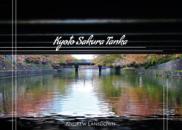AustLit
The material on this page is available to AustLit subscribers. If you are a subscriber or are from a subscribing organisation, please log in to gain full access. To explore options for subscribing to this unique teaching, research, and publishing resource for Australian culture and storytelling, please contact us or find out more.
Latest Issues
AbstractHistoryArchive Description
'This unique book takes readers on a fascinating journey through Japan’s heartland, introducing them to subjects ranging from birds, bamboos and blossoms to omikuji, origami and shishiodoshi, in settings ranging from canals and gardens to castles and temples.
'All the poems are written in a form traditional to Japan, an ancient poetic form known as tanka (or waka).' (Publication summary)
Notes
-
Japanese poetry.
Publication Details of Only Known VersionEarliest 2 Known Versions of
Works about this Work
-
Erin Thornback Reviews Andrew Lansdown
2017
single work
review
essay
— Appears in: Cordite Poetry Review , 1 February no. 57 2017; 'Through a series of visual and textual explorations, Andrew Lansdown’s Kyoto Sakura Tanka creates a striking depiction of the bicameral, separating his collection into kami no ku (the poet sees) and ashimo no ku (the poet wonders). The fundamental basis of Lansdown’s series is rooted in the Japanese tanka, or traditional waka: a five-line piece of poetry divided into mortas, or syllable counts, of 5/7/5/7/7. Yet, in this series, Lansdown once again takes up the themes of nature, transience and master Bashō’s doctrine of fueki ryūkō – ‘permanence and change’ – only to position himself against his chosen poetic tradition. (Introduction)
-
Erin Thornback Reviews Andrew Lansdown
2017
single work
review
essay
— Appears in: Cordite Poetry Review , 1 February no. 57 2017; 'Through a series of visual and textual explorations, Andrew Lansdown’s Kyoto Sakura Tanka creates a striking depiction of the bicameral, separating his collection into kami no ku (the poet sees) and ashimo no ku (the poet wonders). The fundamental basis of Lansdown’s series is rooted in the Japanese tanka, or traditional waka: a five-line piece of poetry divided into mortas, or syllable counts, of 5/7/5/7/7. Yet, in this series, Lansdown once again takes up the themes of nature, transience and master Bashō’s doctrine of fueki ryūkō – ‘permanence and change’ – only to position himself against his chosen poetic tradition. (Introduction)
Last amended 4 May 2016 13:10:21




